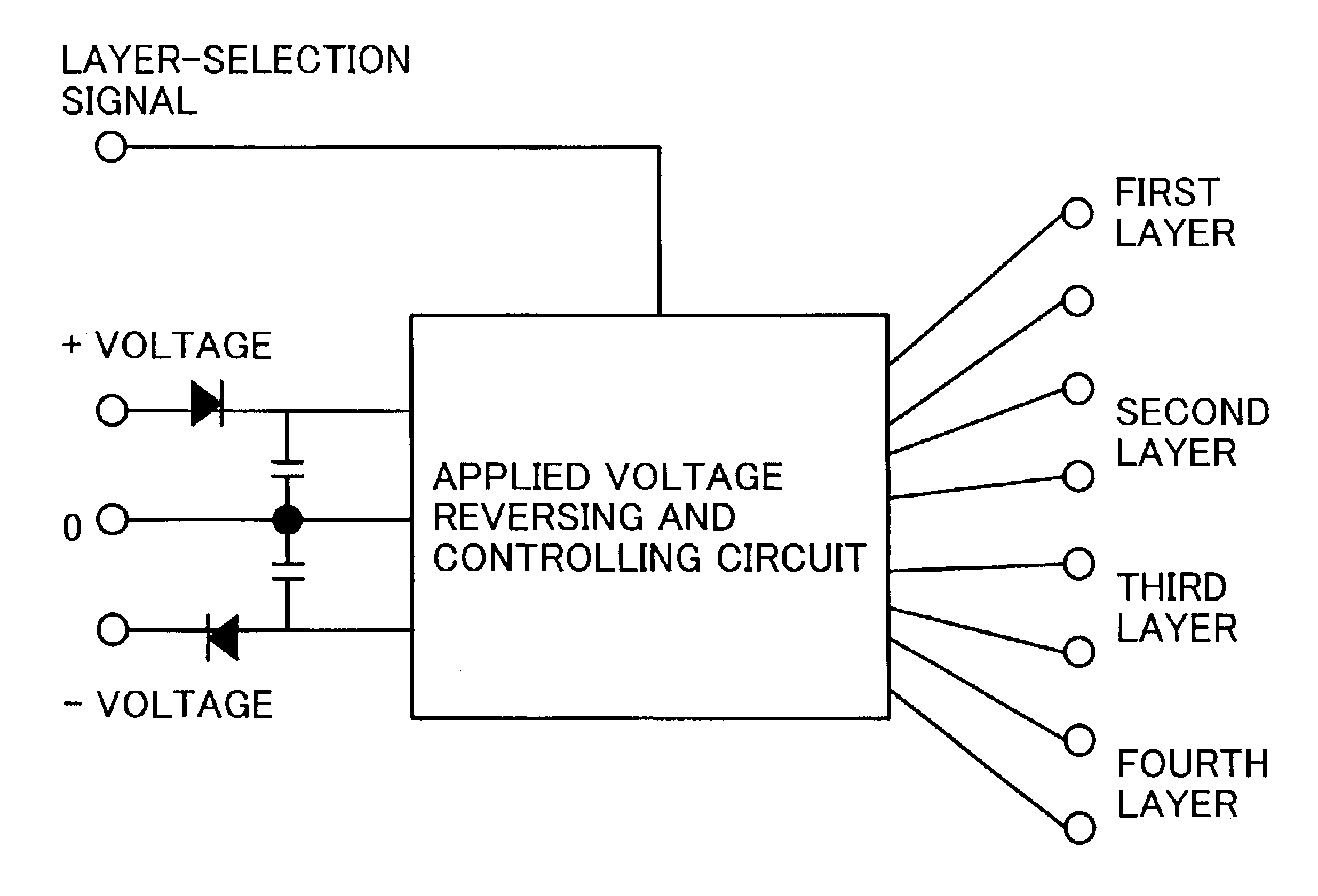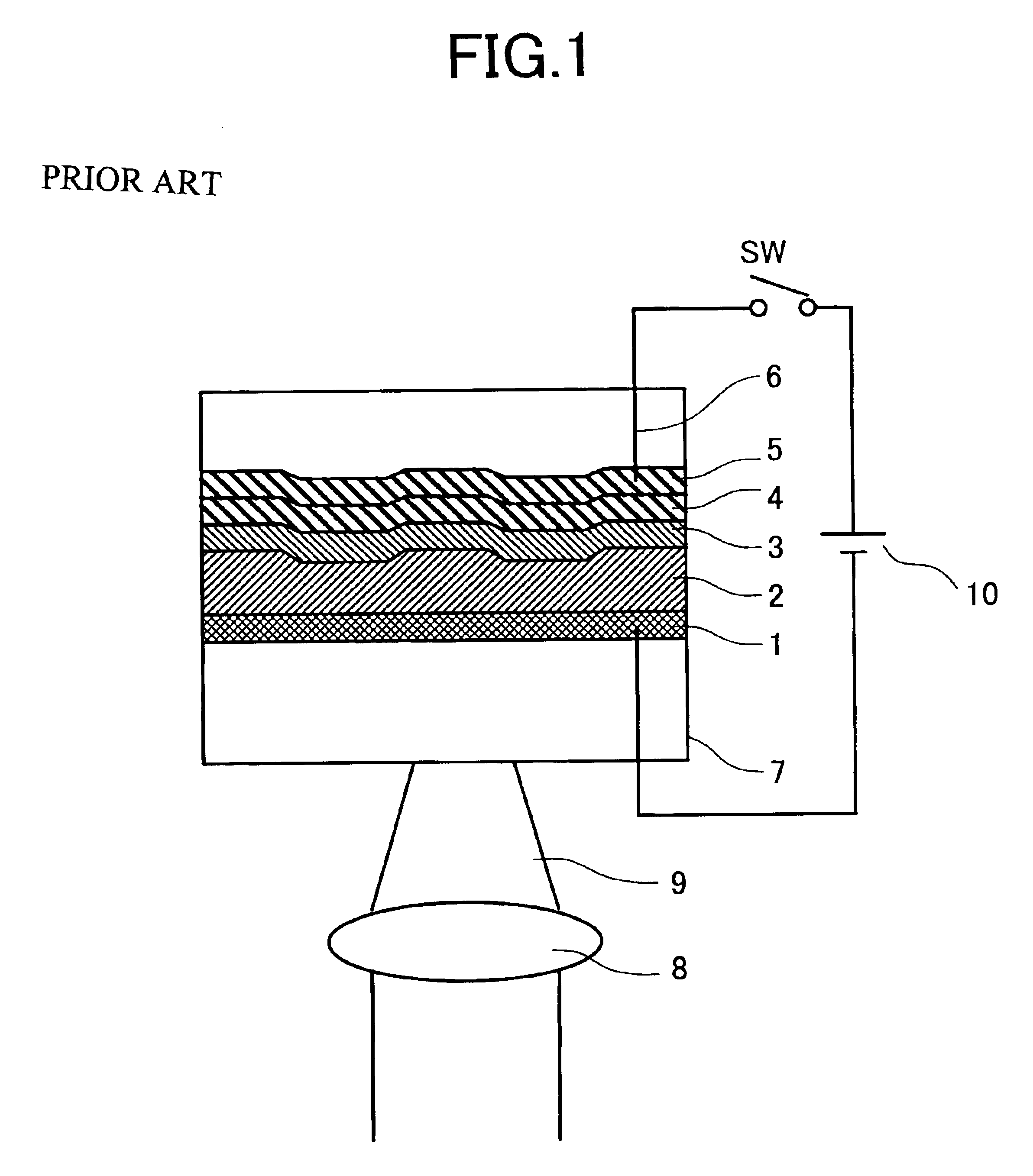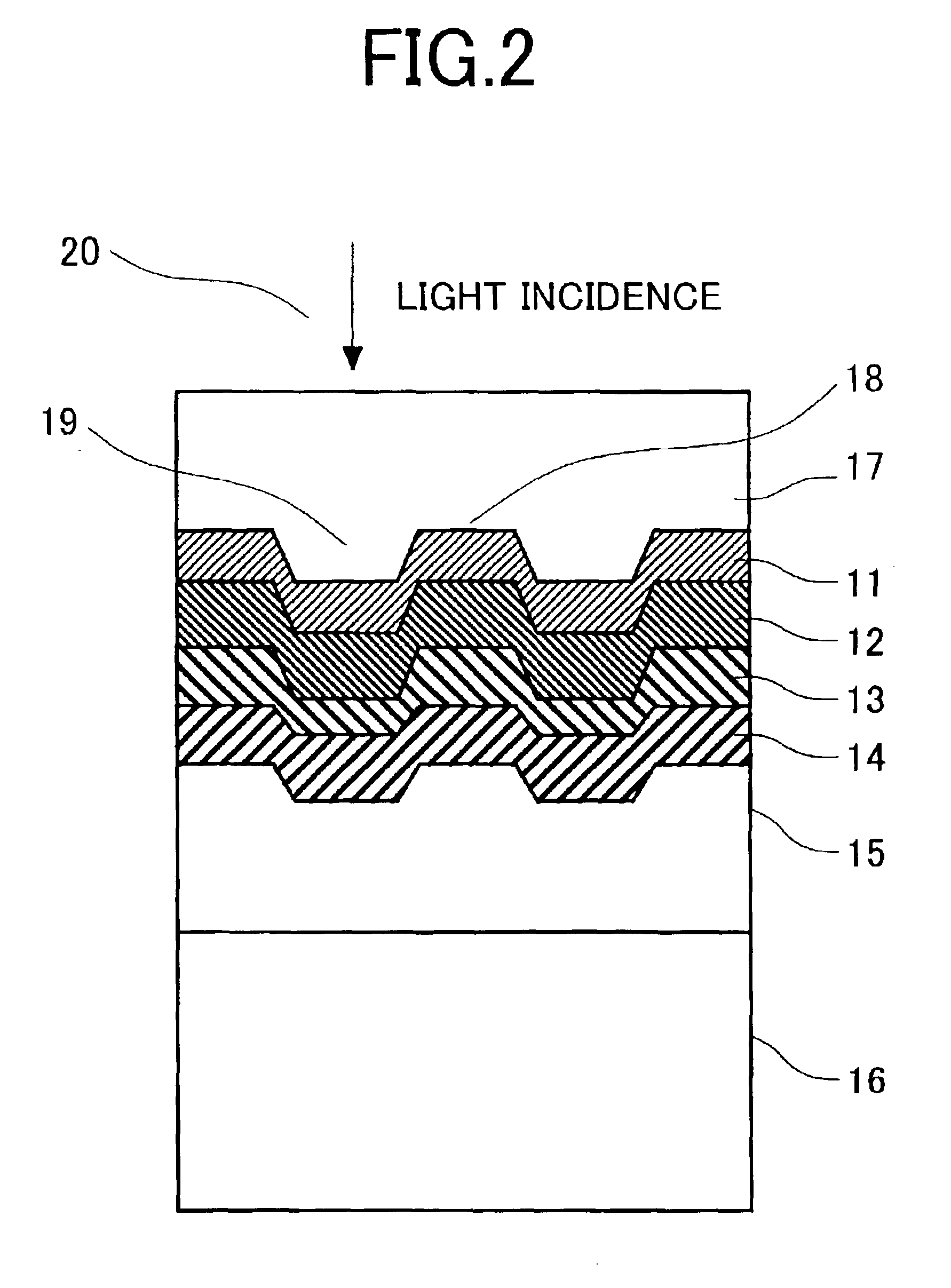Information recording medium having pair of electrodes
a technology of information recording and electrodes, applied in the field of media, can solve the problems of difficult follow-up of the optical disk with auto-focusing and tracking, prone to occur, and unavoidable problems for the optical disk to be confronted
- Summary
- Abstract
- Description
- Claims
- Application Information
AI Technical Summary
Benefits of technology
Problems solved by technology
Method used
Image
Examples
first embodiment
[0052]FIGS. 4 and 5 show structures of a disk-shaped information recording medium in the present invention. FIG. 4 shows a ¼ size view of the structure of the disk and FIG. 5 shows an expanded view of the ¼ size portion of the disk. In FIG. 4, only two upper radial-patterned transparent electrodes 33, 34 are shown while many more are disposed actually all over the disk surface. A light for recording / reading is irradiated from above through the substrate while the top substrate is not shown in FIG. 4. FIG. 5 shows an expanded view of part of the disk. Also in FIG. 5, the top substrate and the insulator layer are not shown so as to simplify the description. In FIG. 5, reference numerals are defined as follows; 45 denotes a reflection electrode, 43 denotes a recording layer, 44 denotes an insulator layer, 42 denotes a photo-conductor layer, 41 denotes a transparent electrode, 46 and 50 denote light spots, 47 denotes a groove area, and 48 denotes a land area. Usually, information is rec...
second embodiment
[0053]This recording medium is fabricated as follows. At first, as shown in FIG. 6, a tracking groove (width: 0.25 micron) is formed on a polycarbonate substrate 58. The groove is used for in-groove recording (recording in the land area at a view from the light spot here) at 0.45-micron track pitches at a diameter of 12 cm and a thickness of 0.6 mm. Addresses are represented by the groove wobbling on the substrate. On the substrate are also formed transparent electrodes (ITO) 51 made of (In2O3)90(SnO2)10 at a film thickness of 30 nm. A groove pattern is then copied onto the surface of the substrate with use of a mother to which the pattern is copied once from a nickel master formed by plating the photo resist of the original disk. This is to correspond the exposed photo-resist of the groove to the land. FIG. 6 shows processes for forming the films on the substrate 57. Note that the structures shown in FIGS. 4 and 5 are upside down in FIG. 6. Then, an As3Se97 layer 52, which is a pho...
embodiment 1
[0107]As the electro-chromic material, such organic materials as thiophene organic olygomer and polymer typically as shown in FIG. 12 are usable in addition to WO3. Especially, conductor organic materials would be better. For a thiophene molecule polymer, however, the laser wavelength is set at 660 nm and the track pitch is set at 0.6 μm, which is about double the value in A thiophene material polymer is formed by vacuum deposition, electrolytic polymerization, or coating. In the case where the electrolytic polymerization is employed, poly(3-methylthiophene), which is a thiophene derivative, is used as monomer. And, LiBF4 is used as the supporting electrolyte and benzonitrile is used as the solvent.
[0108]In this connection, the electro-chromic material layer comes to consist of the following three layers; a layer used as both ion storage layer and dark-current blocking layer, which consists of (CeO2)67(TiO2)33; a solid electrolytic layer made of a material in which acryl UV curing ...
PUM
| Property | Measurement | Unit |
|---|---|---|
| thickness | aaaaa | aaaaa |
| capacitance | aaaaa | aaaaa |
| thickness | aaaaa | aaaaa |
Abstract
Description
Claims
Application Information
 Login to View More
Login to View More - R&D
- Intellectual Property
- Life Sciences
- Materials
- Tech Scout
- Unparalleled Data Quality
- Higher Quality Content
- 60% Fewer Hallucinations
Browse by: Latest US Patents, China's latest patents, Technical Efficacy Thesaurus, Application Domain, Technology Topic, Popular Technical Reports.
© 2025 PatSnap. All rights reserved.Legal|Privacy policy|Modern Slavery Act Transparency Statement|Sitemap|About US| Contact US: help@patsnap.com



